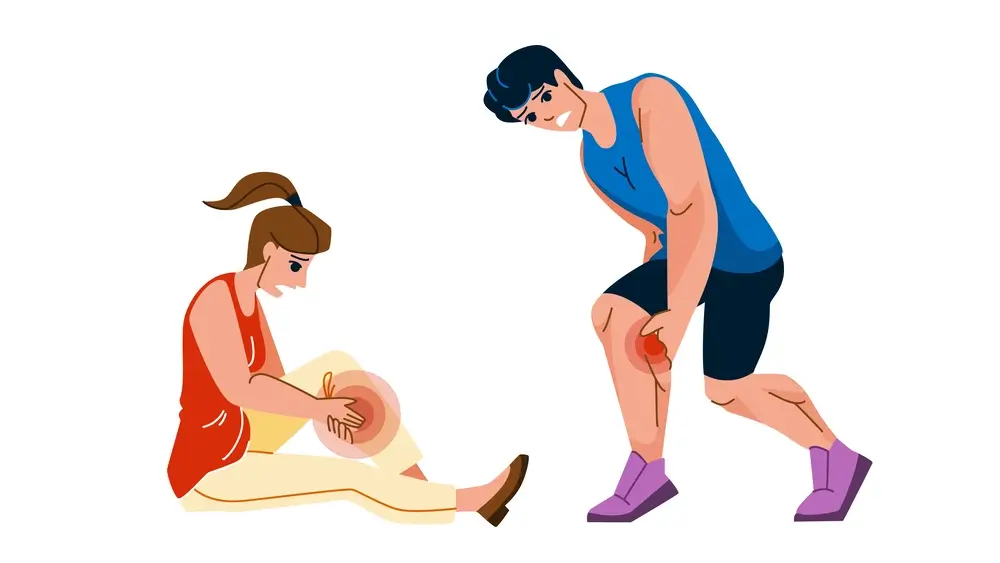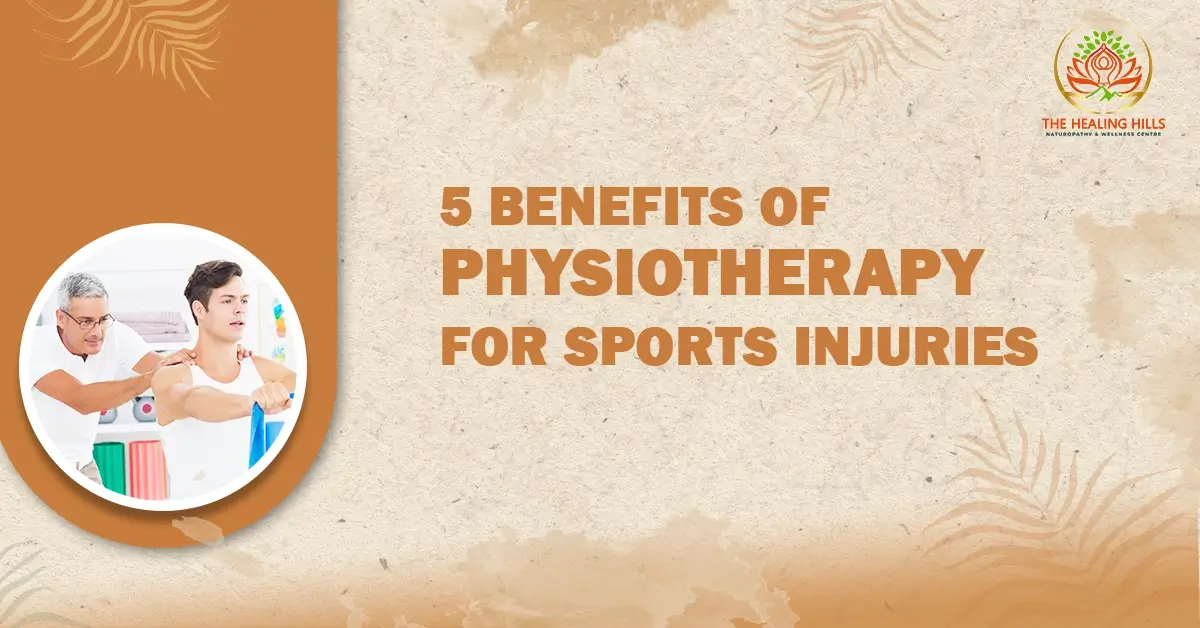Blog Summary:
Content Top Picks
Introduction
Injuries are an inevitable aspect of an athlete’s journey in sports. Whether you’re a weekend warrior or a professional, the risk of injury is always present. When injuries occur, it can be frustrating and challenging to find the best path to recovery. Enter physiotherapy, a powerful ally in the quest for healing and getting back to peak performance. But why is physiotherapy so beneficial for sports injuries? Let’s dive into the top five benefits that make it an essential component of sports injury therapy.
Pain Relief and Management
One of the most immediate benefits of physiotherapy is pain relief. Sports injuries often come with significant pain, and physiotherapy offers a variety of techniques to manage and reduce this discomfort. Whether it’s ankle injury medicine or treatment for sportsinjuries, physiotherapists use methods like manual therapy, electrotherapy, and exercise prescription to alleviate pain. Think of it as turning down the volume on a loud radio; the right treatment can make pain more manageable, allowing you to focus on recovery.

Accelerated Recovery
Being sidelined by an injury is something nobody enjoys, and one of the most compelling reasons to opt for physiotherapy is its ability to accelerate recovery. Through targeted exercises and therapies, physiotherapists can help enhance blood flow to the injured area, decrease inflammation, and promote healing. This means you can get back to your sport faster and more safely. It’s like having a fast-forward button on your recovery timeline, getting you back in the game quicker.
Prevention of Future Injuries
Physiotherapy isn’t just about treating current injuries but also preventing future ones. By analyzing your movements and identifying areas of weakness or imbalance, a physiotherapist can create a program to strengthen these areas. This proactive approach helps lower the likelihood of experiencing another injury. Imagine building a fortress around your body, making it resilient against future attacks from injuries.
Customized Treatment Plans
Every athlete and injury is unique, and physiotherapy recognizes this by offering customized treatment plans. A physiotherapist assesses your specific situation and tailors a plan that addresses your individual needs. This personalized approach ensures that you get the most effective treatment for your injury, maximizing your recovery potential. It’s like having a tailor-made suit, perfectly fitted to your body’s requirements.
Holistic Approach to Health
Physiotherapy adopts a holistic approach to health, addressing not only the injured area but also promoting overall well-being. This includes advice on nutrition, stress management, and recommending lifestyle adjustments that can aid your recovery and improve your performance. enhance your performance. Think of it as tuning up an entire orchestra rather than just one instrument, ensuring harmony and optimal performance.
Common Sports Injuries Treated by Physiotherapy
Physiotherapy proves effective for addressing various sports injuries, such as:
- Sprains and Strains: Common in many sports, these injuries benefit significantly from targeted physiotherapy.
- Tennis Elbow: Physical therapy for tennis elbow includes exercises and manual therapy techniques aimed at alleviating pain and enhancing functionality.
- ACL Tears: Rehabilitation exercises are crucial for recovery and preventing future knee injuries.
- Shoulder Injuries: Whether it’s a rotator cuff injury or a dislocated shoulder, physiotherapy helps restore mobility and strength.
Role of Chiropractic Care in Sports Injury Recovery
Chiropractic care complements physiotherapy by addressing spinal alignment and nervous system health, which are crucial for athlete recovery & chiropractic health. Chiropractors can provide athlete pain relief through adjustments and manipulations that enhance overall function and well-being.
Techniques Used in Sports Injury Physiotherapy
Several techniques are employed in sports injury therapy to aid recovery:
- Manual Therapy: Hands-on techniques to mobilize joints and soft tissues.
- Electrotherapy: Use of electrical energy to reduce pain and stimulate healing.
- Exercise Prescription: Tailored exercises to strengthen muscles and improve flexibility.
- Dry Needling: Similar to acupuncture, this technique targets trigger points to relieve pain.
How to Find the Right Physiotherapist for You
Finding the right physiotherapist for your needs requires careful consideration of their qualifications, experience, and specialization, particularly in sports injuries. Seek recommendations from fellow athletes or trusted sources, and read reviews to gauge patient satisfaction and treatment effectiveness. It’s crucial that the physiotherapist understands the demands of your specific sport and has experience treating similar injuries. Additionally, ensure they are licensed and accredited. A thorough initial consultation can also help assess their approach and compatibility with your recovery goals, ensuring you receive personalized and effective care tailored to your athletic pursuits.

Success Stories in Sports Injury Physiotherapy
The Marathon Runner
A marathon runner suffered a severe ankle injury. Through a combination of ankle injury medicine and a structured physiotherapy plan, she was able to return to running within three months, stronger and more resilient than before.
The Tennis Player
A professional tennis player struggled with chronic tennis elbow. After undergoing physical therapy for tennis elbow, he experienced significant pain relief and improved his technique to prevent future injuries.
The Soccer Player
A soccer player with an ACL tear feared the end of his career. However, with a dedicated physiotherapy regimen, he not only returned to the field but also improved his overall performance thanks to a better understanding of his body mechanics.
Conclusion
Physiotherapy is a cornerstone of effective sports injury treatment and prevention. Its benefits range from immediate pain relief and accelerated recovery to the prevention of future injuries and a holistic approach to health. By offering customized treatment plans, physiotherapy ensures that each athlete gets the care they need to recover fully and return to their sport stronger than before. Whether you’re dealing with a recent injury or looking to prevent future ones, physiotherapy provides the tools and support necessary for optimal athletic performance and overall well-being.
FAQs
What types of sports injuries can physiotherapy treat?
Physiotherapy can treat a wide range of sports injuries, including sprains, strains, fractures, dislocations, and overuse injuries like tennis elbow and runner’s knee.
How long does it take to recover from a sports injury with physiotherapy?
The recovery time varies depending on the injury’s severity and the individual’s overall health, but physiotherapy generally accelerates the healing process, allowing for a quicker return to activity.
Can physiotherapy help with chronic sports injuries?
Yes, physiotherapy can be very effective in managing and reducing the symptoms of chronic sports injuries, helping athletes continue to participate in their sports with less pain and risk of further injury.
Is chiropractic care necessary for sports injury recovery?
While not necessary for everyone, chiropractic care can complement physiotherapy by addressing spinal alignment and nervous system health, improving overall recovery and performance.
How can I prevent sports injuries in the future?
Prevention strategies include regular physiotherapy check-ups, strength and conditioning exercises, proper warm-up and cool-down routines, and wearing appropriate gear for your sport.




